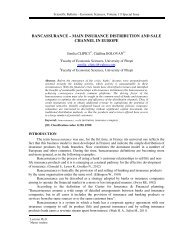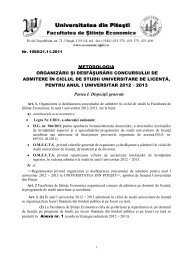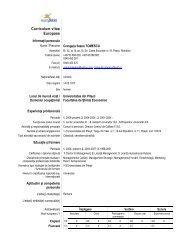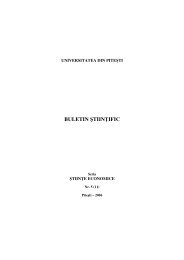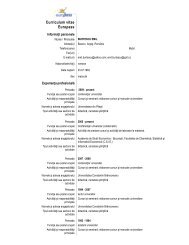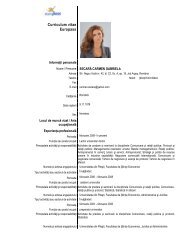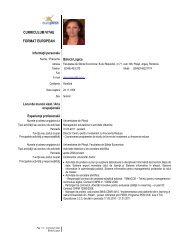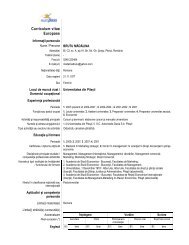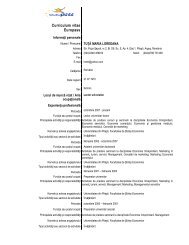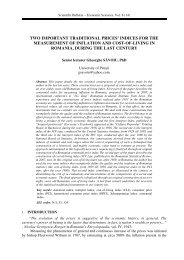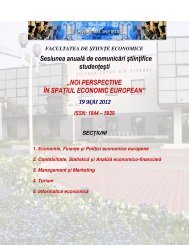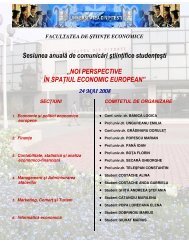buletin Åtiin ific - Facultatea de Stiinte Economice - Universitatea din ...
buletin Åtiin ific - Facultatea de Stiinte Economice - Universitatea din ...
buletin Åtiin ific - Facultatea de Stiinte Economice - Universitatea din ...
- No tags were found...
You also want an ePaper? Increase the reach of your titles
YUMPU automatically turns print PDFs into web optimized ePapers that Google loves.
Employment of labor in mo<strong>de</strong>ls of economic growth∆k = i - (n + δ) × kThus, lea<strong>din</strong>g to increased investment k, while <strong>de</strong>preciation and population growth<strong>de</strong>cline k. The term (+ n) × k represents the investment required to keep the stock of capital /worker constant. δ × k expresses the investment necessary to cover <strong>de</strong>preciation of capital, andn×k measured investment nee<strong>de</strong>d to equip new workers with capital.k = s × f (k) - (n + δ) × kOn a constant base, an increase of the population (n 2 > n 1 ) leads to the capital / workerreduction from k 1 * to k 2 *.y i t tδ(2δ + n )xk(1δ + n )xk∗i1∗i2sxf(k)k∗k2Figure no.1 Population growth in the Solow mo<strong>de</strong>lk∗1This situation explains why countries with a high population rate of growth had a lowerlevel of capital / worker and therefore a lower income. That's why programs to combat povertythat the World Bank promoted in <strong>de</strong>veloping countries aim at reducing fertility by increasingeducation, methods of birth control, etc.Given that the basic assumptions ma<strong>de</strong> in theoretical monosectorials mo<strong>de</strong>ls typesmentioned, most multi-sector (Shinkai, von Neumann, Tinbergen etc.) present interest, especiallyfor new methodological elements that make them and that the latest introduce the i<strong>de</strong>a ofstimulation of Economic <strong>de</strong>velopment is regar<strong>de</strong>d as an infinite time.Finally, mention the contributions ma<strong>de</strong> by mo<strong>de</strong>l-type input-output (Leontief, O. Lange,Almon, Cambridge mo<strong>de</strong>l), which allow estimates of the structure necessary manpower.In the former socialist countries, needs planning have resulted in the <strong>de</strong>velopment of avariety of mo<strong>de</strong>ls, in which employment is usually regar<strong>de</strong>d as a resource base in the effort toachieve economic goals. From our point of view, a place un<strong>de</strong>r the mo<strong>de</strong>l <strong>de</strong>veloped by MichaelKalecki is to be mentioned.84




